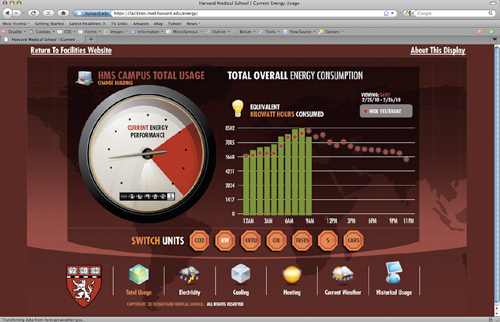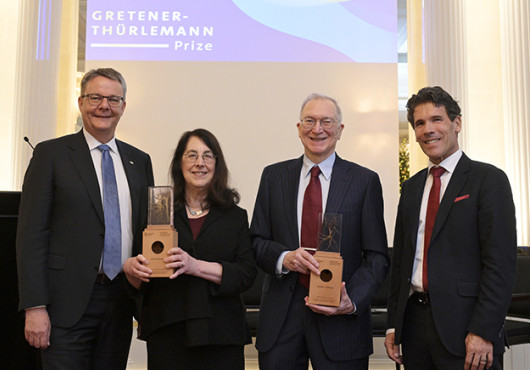Harvard Medical School has debuted a new tool that allows members of the community to monitor energy consumption across campus in real time.

The interactive energy display allows users to choose which utilities to view—such as electricity, cooling or heating—and what units to view them in. The website receives continuous updates from a database that collects information from meters located in buildings around the HMS campus. Readings can be viewed for the entire campus or building by building. A historical usage graph displays usage patterns by the hour, day, week or month, which can be compared with the previous hourly, daily, weekly or monthly usage. By default, units are displayed in kilowatt hours—just like your electricity bill at home. But users can also see the School’s energy consumption in terms of the equivalent number of trees cut down or barrels of oil consumed. “It puts the information into real, understandable terms,” said Claire Berezowitz, the Harvard Office for Sustainability’s Longwood coordinator.
By placing the information front and center on a “green screen” monitor like at 641 Huntington Avenue, or setting the website as the homepage on a web browser, users will, perhaps, be prompted to make more energy-conscious choices, like putting a computer to sleep before a lengthy meeting. In the long run, these choices will help HMS meet Harvard’s greenhouse gas reduction goal. “We hope that this tool becomes a catalyst for change by opening eyes to the resources that HMS consumes,” said Brian Barmmer, an HMS facilities engineer who developed the website.
The tool will also be used by HMS Green Team members to track energy usage and devise strategies to consume less. As the number of Green Teams increases across campus, the Office for Sustainability may someday use the site to host interbuilding energy-reduction competitions.


